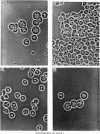Abstract
1. Purified liver nuclei from adult rats separate into two main zones when centrifuged in the slow-speed zonal rotor. One zone contains diploid nuclei, the other tetraploid. 2. The effect of age on the pattern of rat liver ploidy was examined. Tetraploid nuclei are virtually absent from young animals. They increase in proportion steadily with age. Partial hepatectomy disturbs the pattern of ploidy. 3. The zonal centrifuge permits the separation of diploid, tetraploid, octaploid and hexadecaploid nuclei from mouse liver. 4. Rat liver nuclei are isopycnic with sucrose solutions of density 1·35 at 5°.
Full text
PDF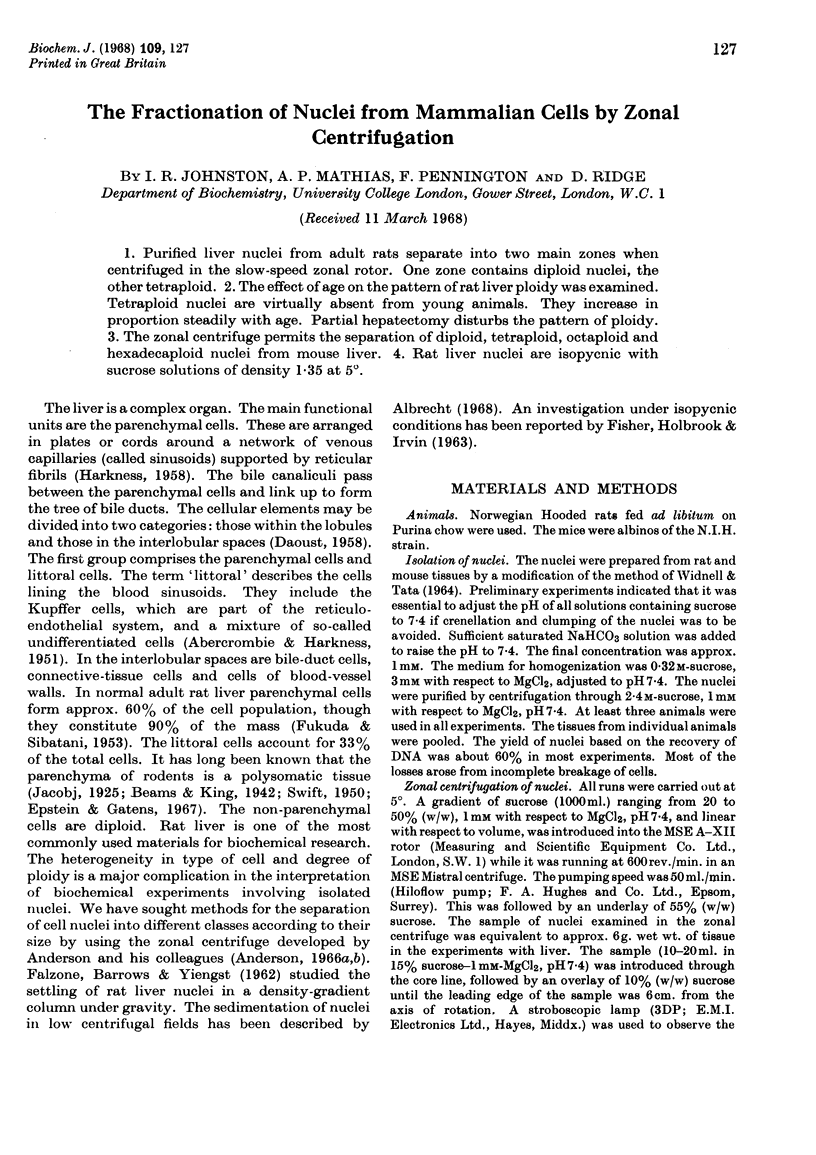
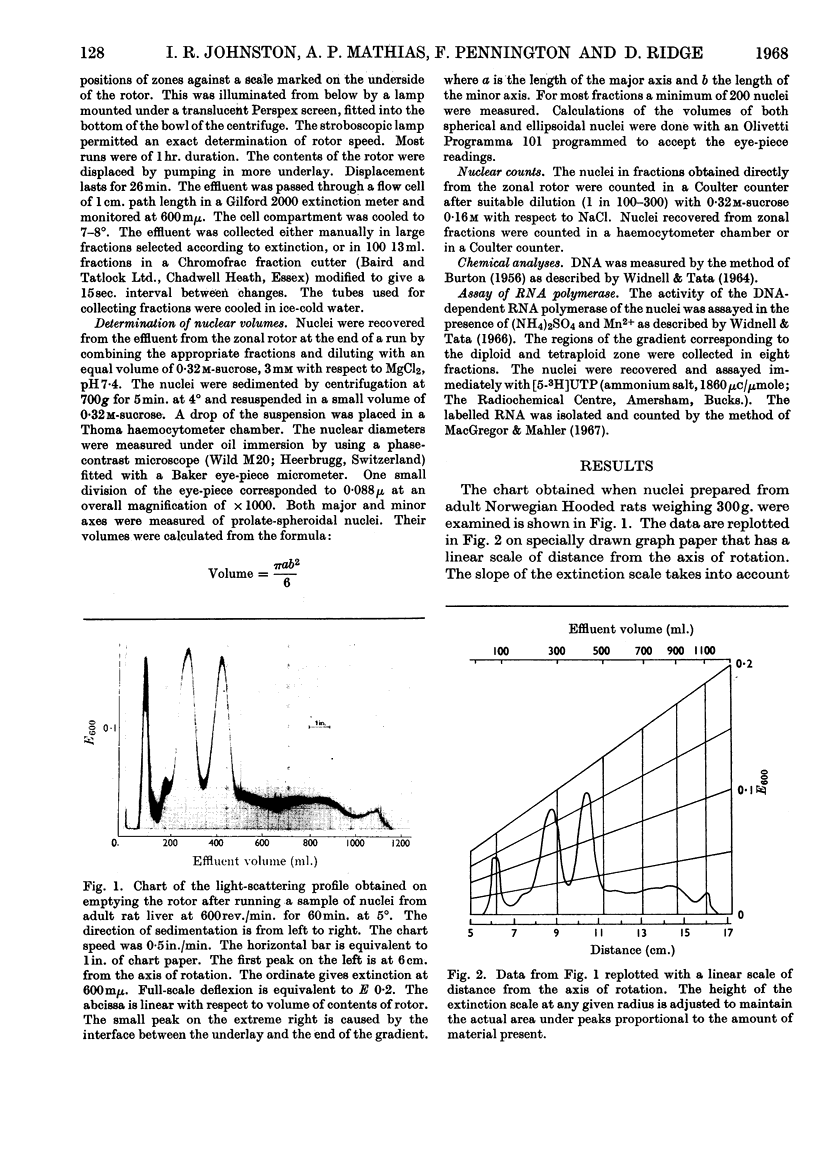
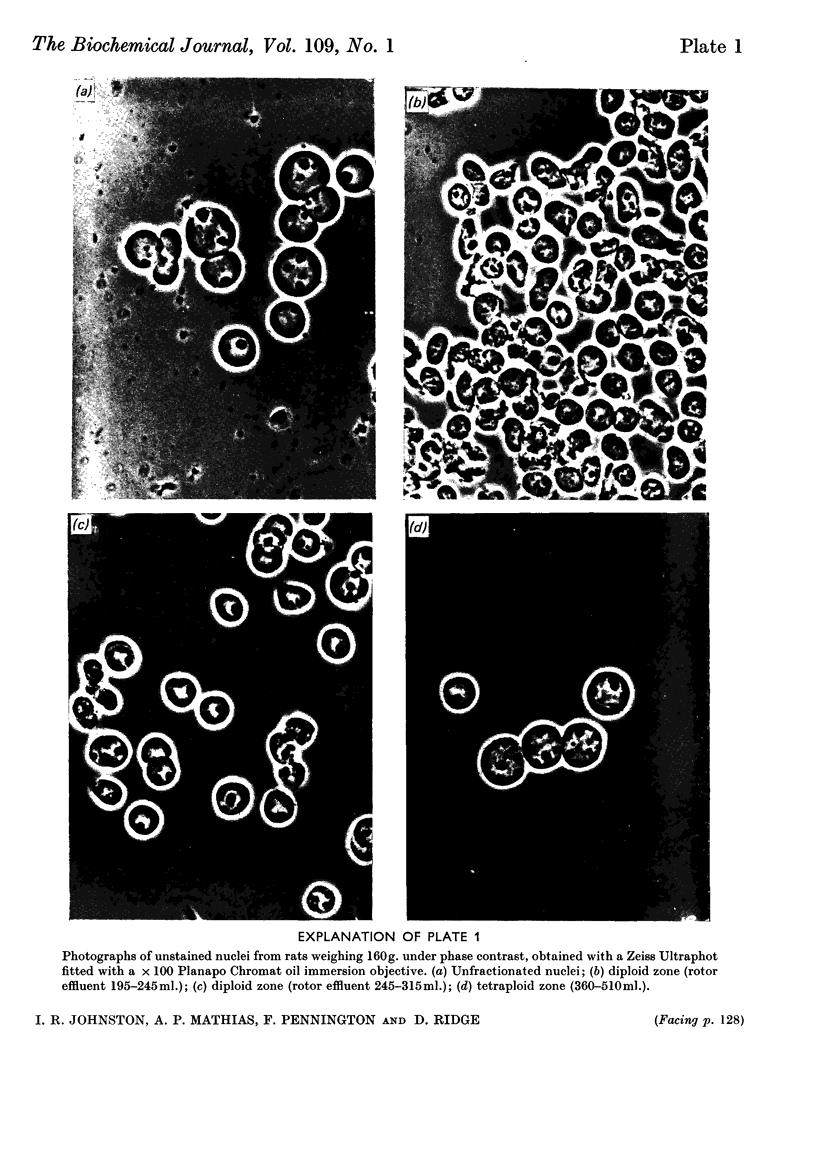
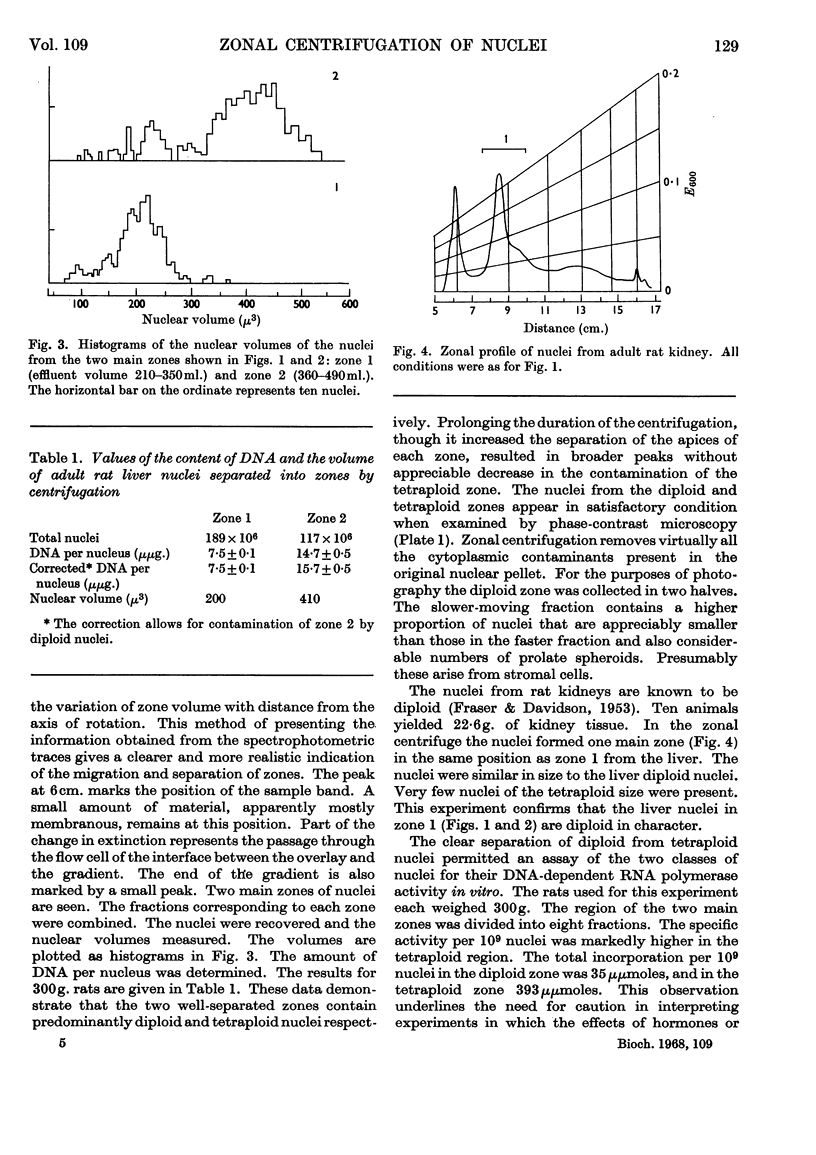
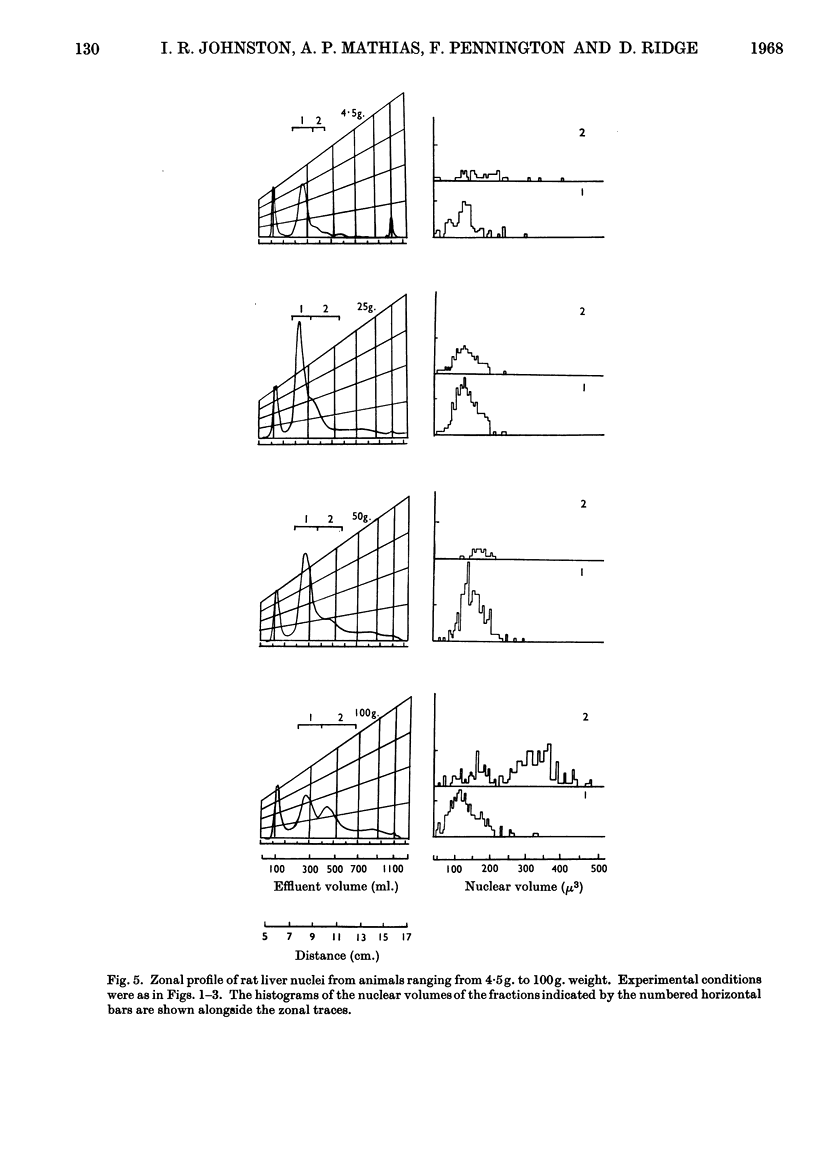
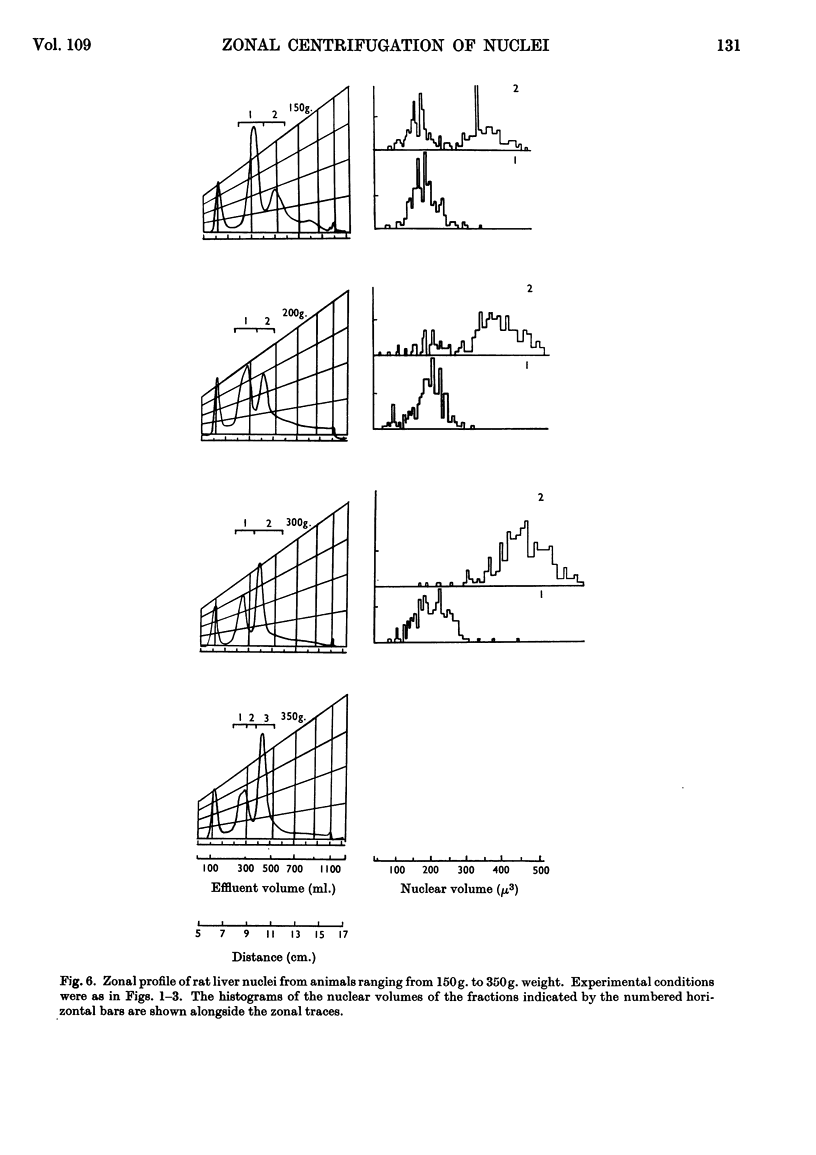
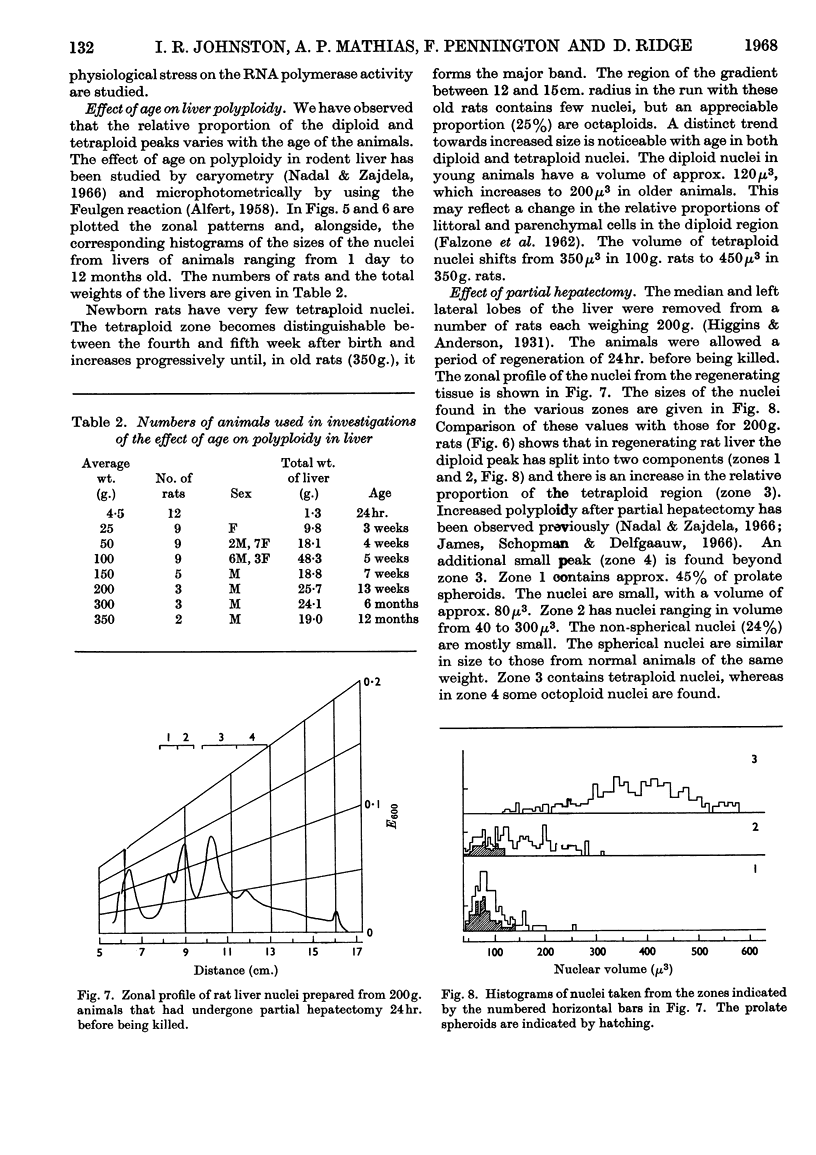
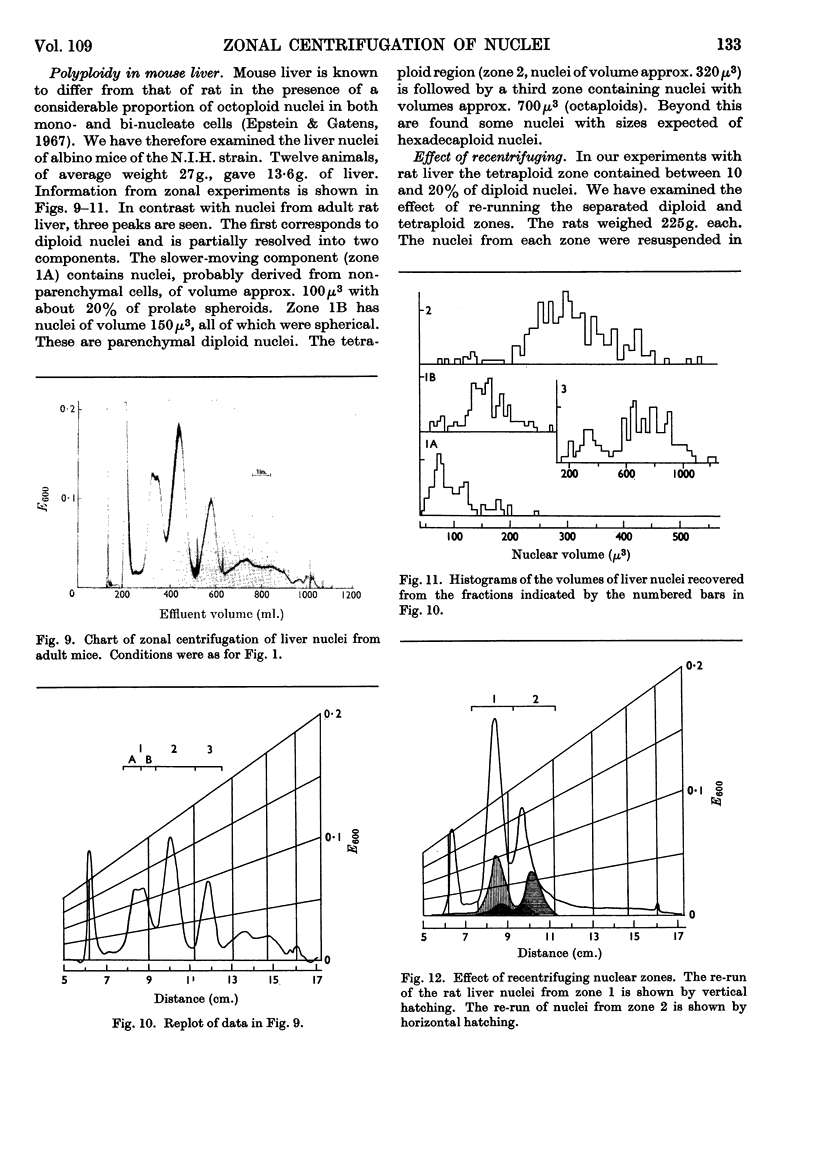
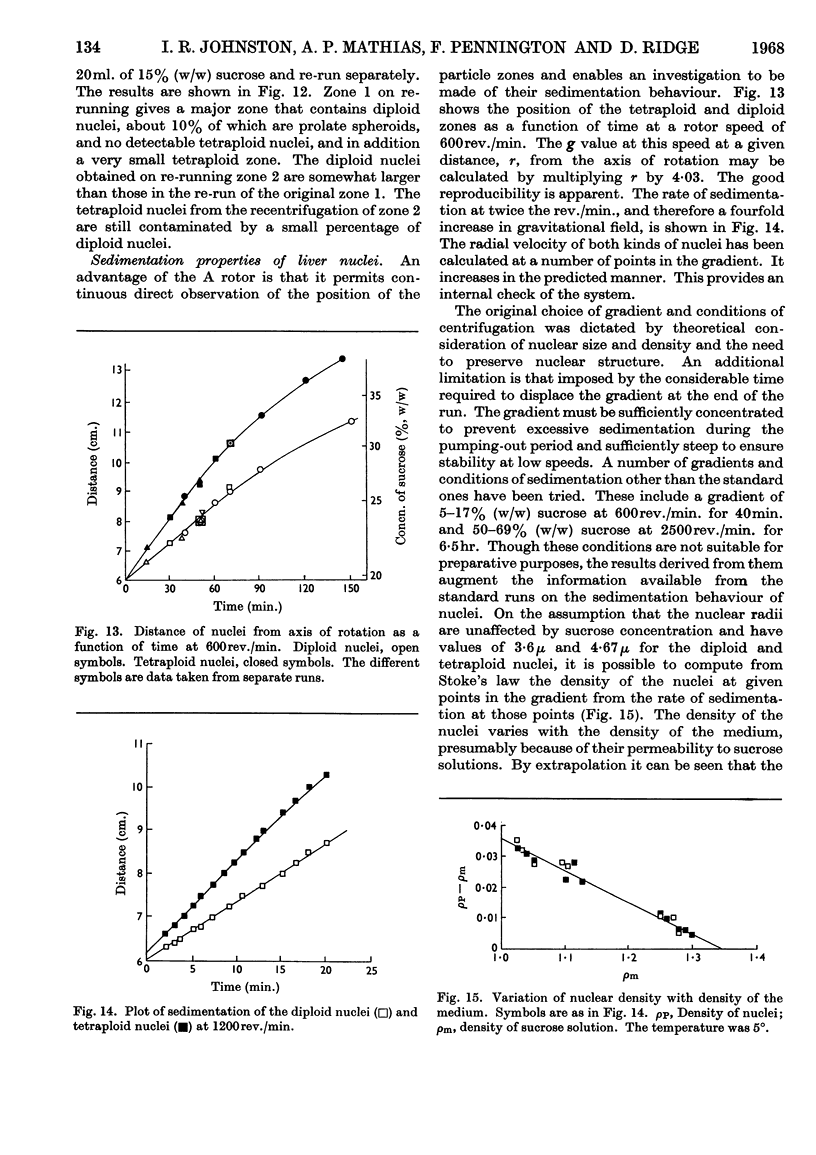
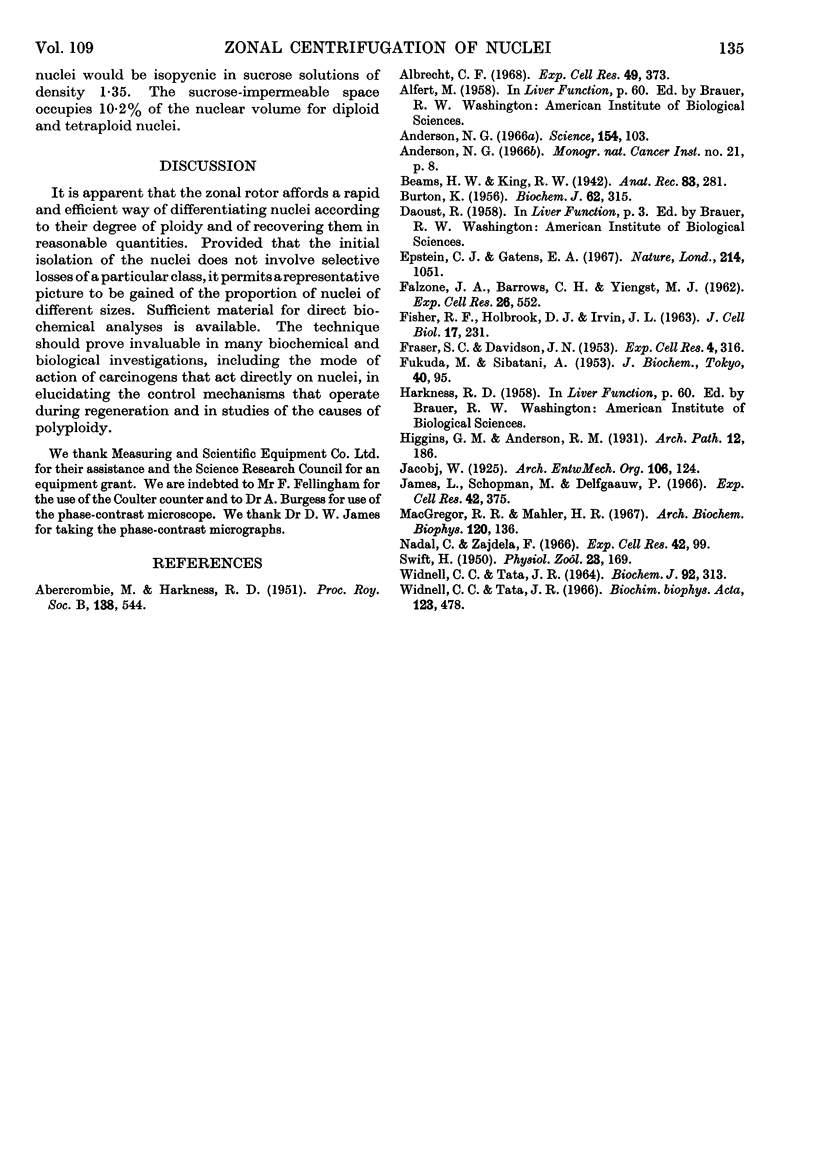
Images in this article
Selected References
These references are in PubMed. This may not be the complete list of references from this article.
- ABERCROMBIE M., HARKNESS R. D. The growth of cell populations and the properties in tissue culture of regenerating liver of the rat. Proc R Soc Lond B Biol Sci. 1951 Oct 30;138(893):544–561. doi: 10.1098/rspb.1951.0040. [DOI] [PubMed] [Google Scholar]
- Albrecht C. F. Fractionation of rat liver nuclei by sucrose gradient centrifugation. Exp Cell Res. 1968 Feb;49(2):373–378. doi: 10.1016/0014-4827(68)90187-0. [DOI] [PubMed] [Google Scholar]
- Anderson N. G. Zonal centrifuges and other separation systems. Science. 1966 Oct 7;154(3745):103–112. doi: 10.1126/science.154.3745.103. [DOI] [PubMed] [Google Scholar]
- BURTON K. A study of the conditions and mechanism of the diphenylamine reaction for the colorimetric estimation of deoxyribonucleic acid. Biochem J. 1956 Feb;62(2):315–323. doi: 10.1042/bj0620315. [DOI] [PMC free article] [PubMed] [Google Scholar]
- Epstein C. J., Gatens E. A. Nuclear ploidy in mammalian parenchymal liver cells. Nature. 1967 Jun 3;214(5092):1050–1051. doi: 10.1038/2141050a0. [DOI] [PubMed] [Google Scholar]
- FALZONE J. A., BARROWS C. H., YIENGST M. J. Fractionation of rat liver nuclei into diploid and tetraploid DNA classes by continuous density gradient sedimentation. Exp Cell Res. 1962 Mar;26:552–561. doi: 10.1016/0014-4827(62)90160-x. [DOI] [PubMed] [Google Scholar]
- FISHER R. F., HOLBROOK D. J., Jr, IRVIN J. L. Density gradient isolation of rat liver nuclei with high DNA content. J Cell Biol. 1963 May;17:231–236. doi: 10.1083/jcb.17.2.231. [DOI] [PMC free article] [PubMed] [Google Scholar]
- James J., Schopman M., Delfgaauw P. The nuclear pattern of the parenchymal cells of the liver after partial hepatectomy. Exp Cell Res. 1966 May;42(2):375–379. doi: 10.1016/0014-4827(66)90302-8. [DOI] [PubMed] [Google Scholar]
- MacGregor R. R., Mahler H. R. RNA synthesis in intact rat liver nuclei. Arch Biochem Biophys. 1967 Apr;120(1):136–157. doi: 10.1016/0003-9861(67)90607-8. [DOI] [PubMed] [Google Scholar]
- Widnell C. C., Tata J. R. A procedure for the isolation of enzymically active rat-liver nuclei. Biochem J. 1964 Aug;92(2):313–317. doi: 10.1042/bj0920313. [DOI] [PMC free article] [PubMed] [Google Scholar]
- Widnell C. C., Tata J. R. Studies on the stimulation by ammonium sulphate of the DNA-dependent RNA polymerase of isolated rat-liver nuclei. Biochim Biophys Acta. 1966 Sep;123(3):478–492. doi: 10.1016/0005-2787(66)90216-4. [DOI] [PubMed] [Google Scholar]




